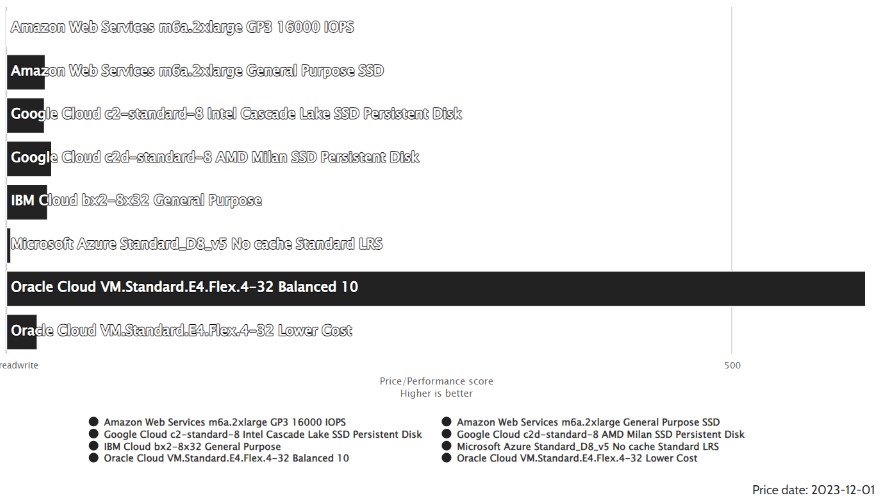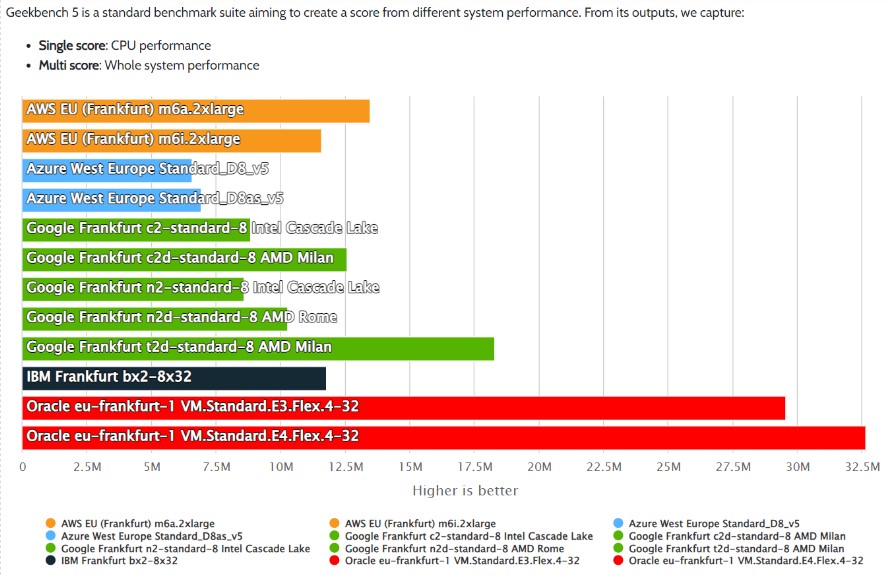- About
Getting to know us
- Services
- Managed Services
- Application Services
- Cloud Services
- Data Science
- Consulting Services
- Technology Solutions
Managed Services
Application Services
Data Science
Consulting Services
Technology Solutions
- Industries
- Resources
Resources
- Contact
- Contact us
Five common myths about Oracle Cloud Infrastructure (OCI): debunked!
Contents
First of all, some context: According to Ofcom, Amazon and Microsoft together make up 70 – 80% of the UK Cloud computing market share. In any market, a lack of competition is a problem for consumers. However, according to the 2023 State of the Cloud report, 85% of organisations are actively pursuing a multi-cloud strategy, selecting the best platform for each workload. Organisations are looking at alternative providers, and when they do, Oracle should always be in the mix. Indeed, while it faced criticism in its early market entry, Oracle has revamped its approach, recently earning recognition as a Leader in the Gartner Strategic Cloud Platform Services Magic Quadrant for 2023.
This blog illustrates why Oracle Cloud is such a compelling option. Specifically, we’ll look at some common misconceptions about Oracle Cloud Infrastructure (OCI), set the record straight and provide clarity surrounding its capabilities.
Myth #1: Oracle Cloud Infrastructure is expensive
Let’s start with the biggest myth of all!
In reality, OCI typically costs between 40-80% less than other major providers.
This is due to several factors, including a 50% lower resource cost, up to 90% savings on block storage, customisable shapes and 10x lower data egress costs (inc. 10TB free). Services like VPN, NLB and NAT are all free with Oracle Cloud, unlike with other providers.
Globally consistent pricing across all 50+ regions and annual flexible contract options make Oracle Cloud budgeting significantly easier and more predictable than with the competition.
Take a look at this Geekbench instance price performance comparison from Cloud Mercato below, showing how a standard 8-core, 32GB instance compares to the major providers. As you can see, Oracle Cloud delivers between 2-5x better price performance than every other provider.
If you’d like to see what Oracle Cloud could cost in your organisation, use our Oracle Cloud calculator tool to find out.
Myth #2: Oracle Cloud Infrastructure is slow
OCI launched in 2018 and was built on the lessons learned from Gen 1 Cloud providers. The result is OCI's unique non-blocking, layer 2, RDMA cluster networking that delivers incredibly high performance, security and flexibility. So, Oracle has made OCI the only Cloud provider with a network AND storage performance SLA.
We’ve covered CPU performance above, so looking at OCI storage (heavily NVMe), it is important to note it offers the lowest latency and highest IOPs at the lowest cost. Plus, you can resize or boost performance in real-time online – there’s no ‘offline for maintenance’ with OCI.
In this IOPS price performance example from Cloud Mercato, you can see the benefits of this increased performance delivered from a standard balanced E4 VM.
A popular low-spec but exceptionally high-value offering is the A1 VM, of which you can deploy four in Oracle Free Tier at no cost.

Again, for a more personalised understanding, I’d suggest you try our Oracle Cloud Calculator.
Myth #3: Oracle Cloud Infrastructure isn’t secure
This could not be further from the truth!
Given Oracle’s data security pedigree, you would expect a strong performance here. Indeed, it is, with always-on security designed at the core rather than in a myriad of bolt-on services.
All data is encrypted at rest and in transit and fully scrubbed on removal. Off-box virtualisation means isolation for security, performance and predictability. Most security tooling is included for free, including Security Zones, Cloud Guard and Threat Detector. These proactively identify risks according to defined policies. Oracle also maintains over 80 industry-specific attestations like SOC, ISO, HIPAA and Cyber Essentials to ensure compliance.
Of course, Cloud platform security is only one aspect of secure, compliant service delivery, and depending on your industry, regular risk assessments, rigorous auditing, and proactive tooling should be in place.
Myth #4: Oracle Cloud Infrastructure is only for Oracle workloads
OCI is perfect for Oracle workloads based on price/performance, licensing TCO and full stack support. However, the same benefits also apply to any other enterprise workload. Most organisations have adopted a multi-cloud strategy, and Oracle Cloud has low latency and high bandwidth. OCI interconnects with Azure in 12 global regions to help deliver this. You can federate Active Directory with Oracle Cloud, run VMware, deploy RedHat, almost anything, and without re-architecting.
Legacy workloads can be catered for due to layer 2 networking and true bare metal if required.
Also, it is worth mentioning another popular database: MySQL. If you need fast OLTP and OLAP with zero ETL, it’s worth taking a look at MySQL Heatwave.
Cloud-native applications are another matter which I’ll cover in a separate myth-busting post.
Myth #5: Oracle Cloud Infrastructure isn’t for developers
Truth be told, Oracle does have ground to make up with developers compared to AWS or Azure. However, from a technical perspective, OCI's cloud-native services really are groundbreaking. Importantly, Oracle has adopted an open-standards policy for virtually all services across databases, containers and networking to help you avoid costly vendor lock-in when developing applications.
Inbuilt AI and ML across a range of services accelerate application development, and the rapid expansion of Oracle’s data services portfolio dominates. The OCI Free Tier is an excellent option to get started. Plus, (and of course) Oracle Cloud supports the fastest low-code application development environment available: APEX.
Given MySQL is the #1 database of choice for developers, it is worth mentioning again MySQL Heatwave. A simple Cloud plug-in that transforms your MySQL database into a blistering powerhouse for data queries, allowing you to perform OLAP and OLTP on the same data source with zero ETL. Analytics becomes real-time and delivers incredible price performance compared to its rivals. For instance, comparing MySQL Heatwave to AWS Snowflake offers 6.8x the performance at one-fifth of the cost.
Conclusion
So, there we go, five common misconceptions debunked. Hopefully, that’s addressed some of your questions or given you food for thought. We’ve worked a lot in the Oracle space, both at an on-premise level and Cloud, and we’ve been recognised by Gartner as a representative Cloud vendor. So, if you have any further questions or would like to talk about a specific project, please check out some of our previous work and get in touch.
Subscribe to Eye on OCI Insights for the latest news and updates for all things Oracle Cloud.

.png?width=250&name=stonewater-logo%20(1).png)

